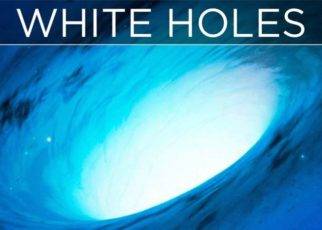Most of us who have a curiosity for science, particularly space and the seemingly infinite cosmos, already know about the black hole phenomenon. A black hole is a configuration of space that “feeds” on all matter within its gravitational reach, including light, and may emit consistent amounts of radiation over time. Many black holes are visible in the universe, and usually form from spontaneous cosmic events that occur during the explosion of a star. While every star is unique, the occurrence of a wormhole in the center of a black hole could reveal the rare sight of a white hole.
What is a White Hole?
By definition, a white hole is the exact opposite of a black hole: it produces matter and does not absorb anything. “This has many similarities to the Big Bang singularity, although it’s not quite the same since there was nothing before the Big Bang (Masters, 2002).” Often described as a mirror image of a black hole, astrophysicist Robert Hjellming of the National Radio Astronomy Observatory proposed an additional theory in 1971 regarding the reality of a white hole. He suggested that they could actually lead to alternate universes between space and time, and matter that is sucked into a black hole reappears elsewhere. Considering the law of the conservation of mass, the concept is not only mathematically true but physiologically plausible as well.
Fact or Fiction?
Non-believers are very concerned about the presence of white holes in the night sky, however, because there seems to be a lack of “visual” evidence in research. Yet the interchangeable facts and fallacies, so to speak, of science continue to develop, and it may be possible that our methods of distinguishing between black and white holes are premature.
Theories & Research
Over so many years later, the theory about white holes in space is still up for debate. Studies have been carried out to observe the activity of a pseudo-white hole in isolation, that is, without a direct relationship to a black hole. But it’s rather difficult to understand how to truly create an experience that we know little about, with exception for detailed, mathematical explanations. These experiments, including a study carried out by Hsu, a physicist at the University of Oregon, have yielded possible theories stating that while a black hole emits radiation, a white hole does not absorb or emit radiation at all.
The end result of an unstable white hole is a violent release of energy known as “quasithermal radiation.” It is assumed that they cannot exist in empty space, and any remnants from their explosions cannot be traced back to their existence in time. Unfortunately, the chances of someone surviving a confrontation with a black hole in an attempt to identify a white hole is slim to none, and finding a way back to Earth from another universe—priceless.





